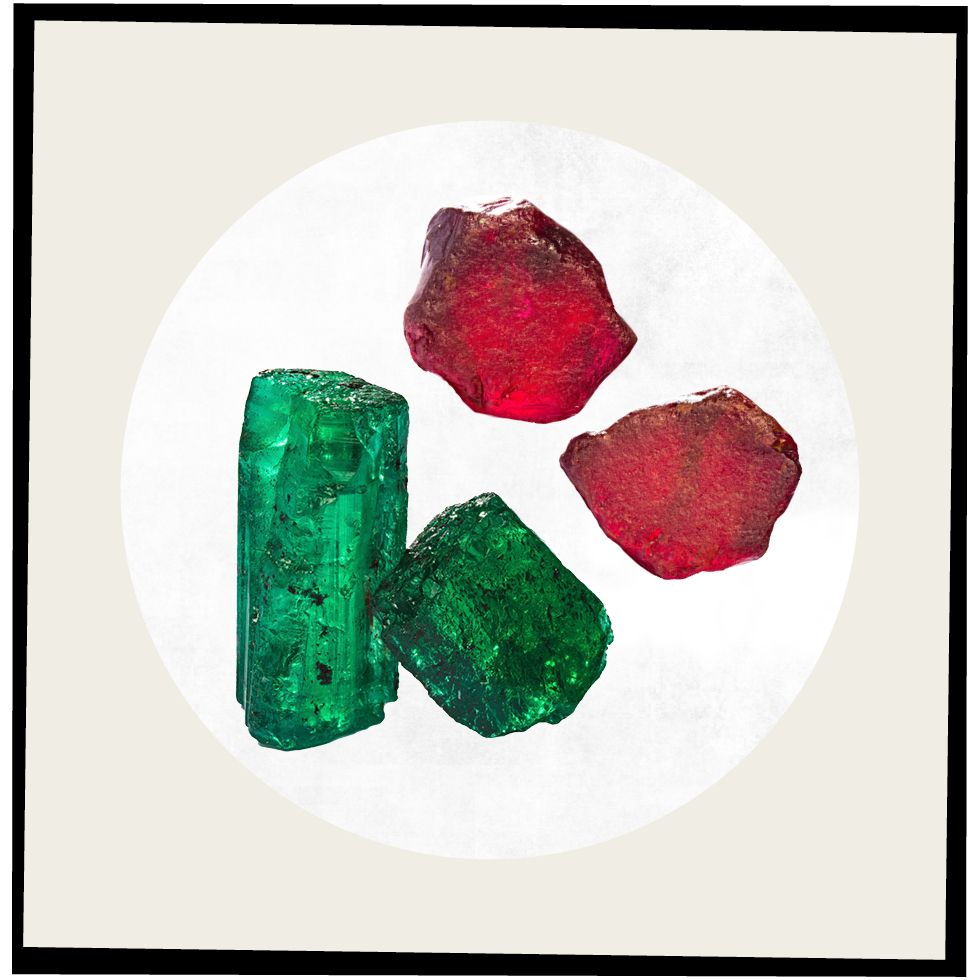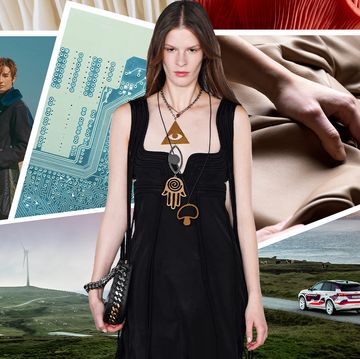Whether it’s a dazzling emerald engagement ring or a ruby heirloom necklace, a brightly hued piece of jewellery can instantly elevate any outfit. Yet precious gems are far more than just glittering adornments. Each gemstone, created deep within the earth over millions of years, is totally unique – meaning there is a kind of magic to owning one.
‘Every gemstone is unique just like a fingerprint,’ says New York-based fine jeweller, Sandy Leong. ‘No two gemstones are ever alike, which makes designing jewellery with them such a personal endeavor, both for me and for my consumer. It's special for the wearer of one of my pieces to know that their special piece is as one-of-a-kind as they are.’
Appreciate the history
Formed through intricate natural processes, gemstones are in fact crystallised minerals. Two of the most coveted – rubies (the red variety of corundum) and emeralds (a type of beryl) – are created when the minerals are forced together under extreme heat and pressure in the earth. These precious gems are also steeped in historical significance. Legend has it that emeralds were Cleopatra’s favourite gemstone, with Egyptian emerald mines dating back to 1500BC. Some cultures even believed that placing one of these bright green stones under your tongue helped you see the future and protect against evil.
If emeralds are a queen’s gem, then rubies are a king’s. In Sanskrit, the word for ruby is ‘ratnaraj’, meaning king of precious stones. Some believed that rubies held the very power of life, and it is still seen as a symbol of commitment today – so it’s no wonder this fiery gemstone is traditionally given on 40th wedding anniversaries. ‘There are some rare, exceptional gemstones with provenance that discerning clients consider more important than a special diamond,’ adds Vartness Knadjian, of diamond watch brand, Backes and Strauss. In fact, large natural rubies frequently cost more per carat than colourless diamonds.
Understand the journey
So how do these raw beauties make their journey from resting deep within the earth to adorning our necks and ears? When it comes to the extraordinary moment of uncovering gemstones from beneath the ground, there are a number of techniques, such as underground mining, wet digging and open-pit mining. This last method is the one favoured by Gemfields, a leading miner of responsibly-sourced coloured gemstones, to uncover rubies in Mozambique and emeralds in Zambia.
Geologists begin with the all-important job of locating the gems underground. The gemstones are then revealed by removing the overlying surface, washed under high pressure and moved to treatment plants, where they are sorted into minutely detailed grades based on size, shape, colour and clarity.
‘Gemstones are unique: no two are the same and each tells a story,’ says Josina von dem Bussche-Kessell, global sales director at Fabergé. ‘I particularly love looking at gemstone inclusions (small natural imperfections), as you can see nature woven into the beauty of them.
‘At Fabergé, we enjoy using a variety of gemstones in all our creations. It’s about creating unique pieces that resonate with the individual and capture that illustrious Fabergé magic. Through our bespoke work, we often find that clients tell us that certain gems ‘speak to them’ and therefore, selecting gemstones for a piece is a really personal process.’
Once graded, the rough gemstones are sold through auction to cutters, who then prepare them for jewellery designers, ready to work their magic transforming each one into a unique accessory.
‘A gemstone waits below the ground for hundreds of millions of years, but once discovered it can take just one year for it to reach the consumer,’ says Elena Basaglia, a gemmologist at Gemfields.
Look for transparency
But how can you be sure when you buy a piece of investment jewellery that its provenance is as clear as the gems themselves? With growing demand from consumers for responsibly sourced gems, transparency is now a critical part of the mining process. ‘We have the power to demand change, by choosing to vote with our wallet and support brands that are working towards leaving a positive impact,’ says Amie Tran, PR strategist at Eco-Age.
To that end, leading brands such as Gemfields, Chopard and Tiffany & Co have developed The Gemstones and Jewellery Community Platform in a bid to ensure fair labour and better environmental protection and governance. Gemfields, for example, has partnered with conservation organisations to protect African wildlife and is funding farming projects that generate an income for local communities.
It doesn’t end when the gem leaves the ground, either. ‘Before a cutter acquires a gemstone from Gemfields, they sign a declaration to ensure that they conduct business in a responsible manner,’ explains Basaglia. The company also keeps the top soil to refill pits or replant trees. ‘We are mining a finite resource,’ she emphasises. ‘We must focus on the future and be aware of the impact we have, including the benefits we can bring to both the workforce and the local community.
‘No matter what we find, we recognise that every gemstone is a gift from Mother Nature. We value each one. Colour is so important in people’s lives and there is something very magical about discovering that buried deep within the earth.’
Find out more about how to shop and style rubies and emeralds at gemfields.com



















